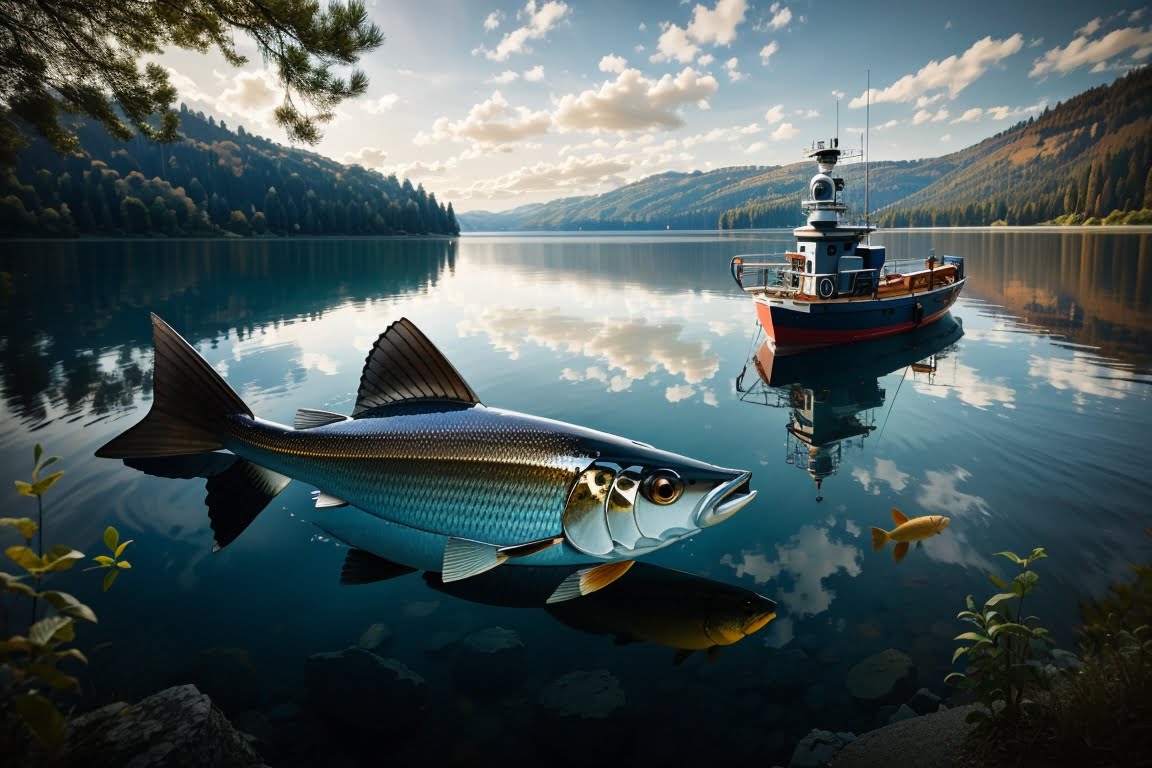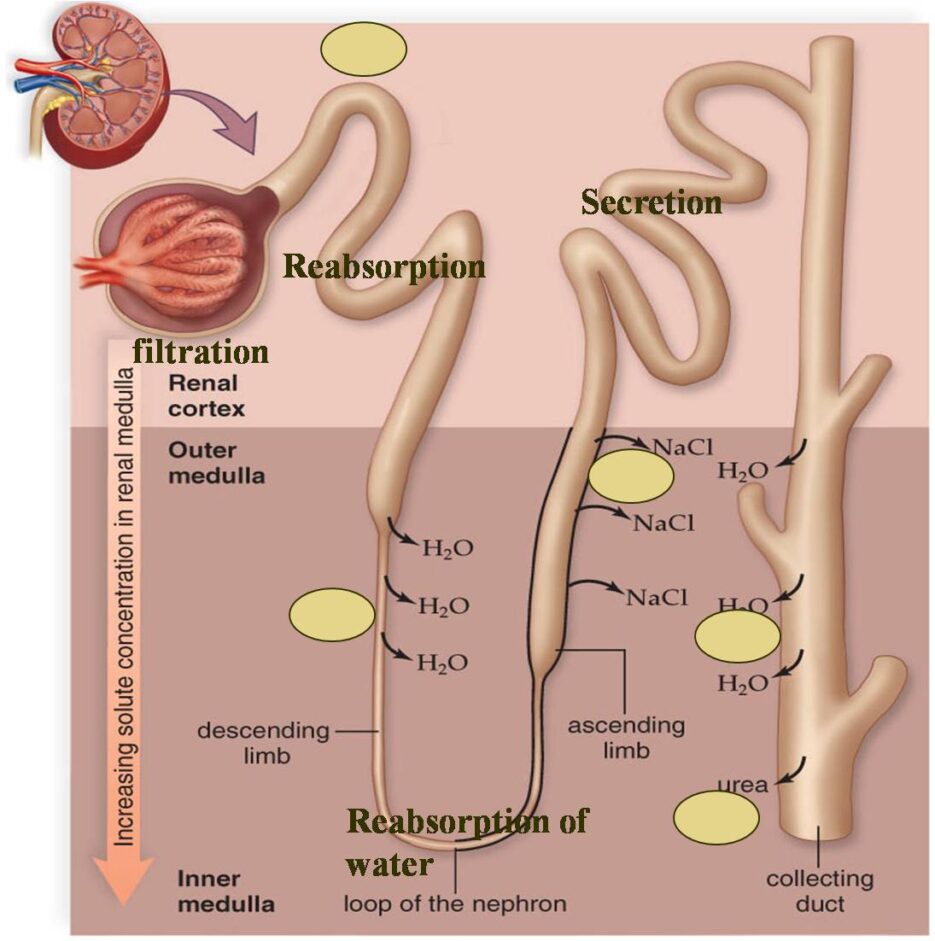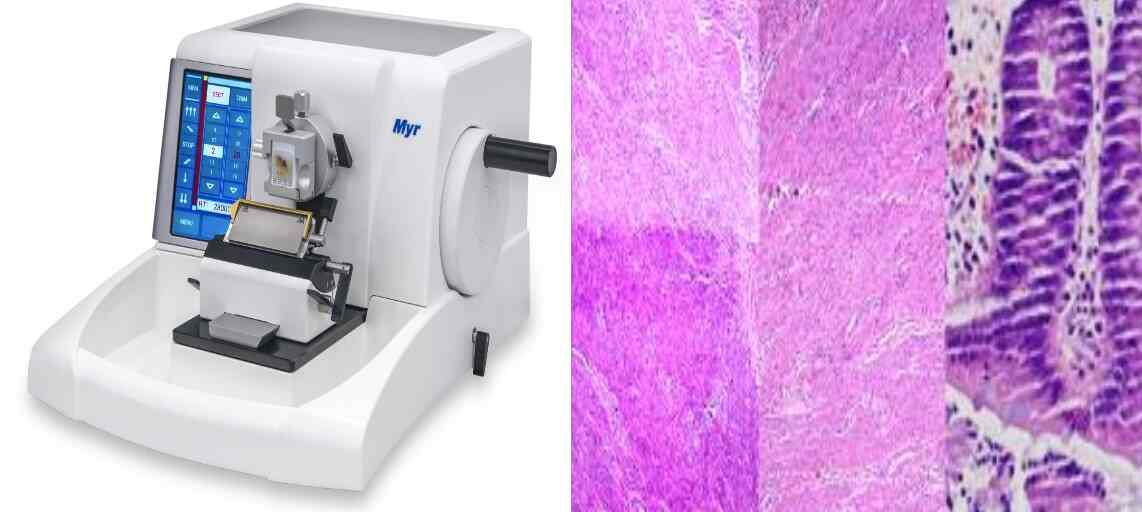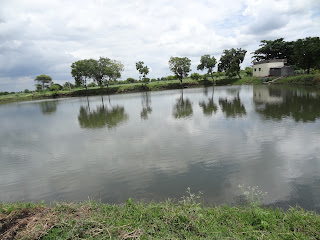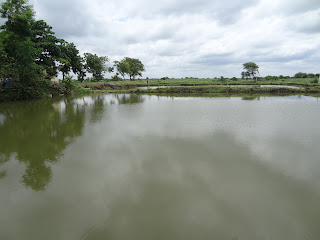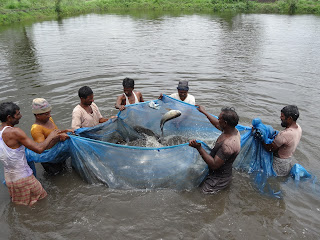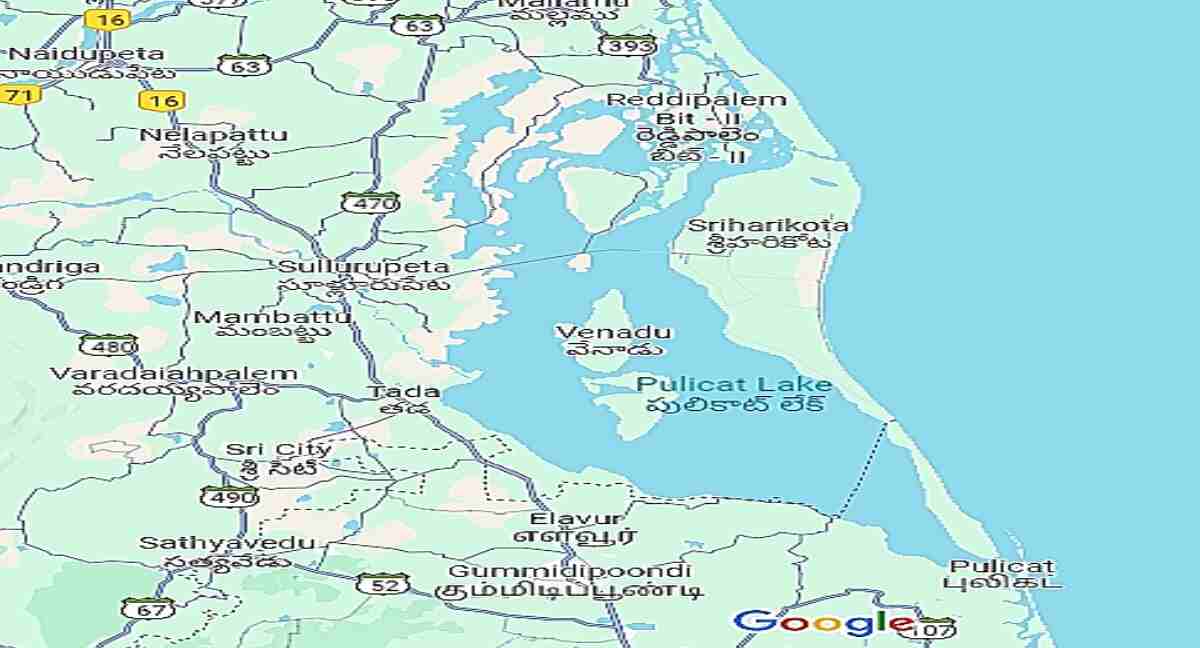Fish Preservation and Processing Methods: Fish preservation is a very important aspect of the fisheries. Normally the fish farms or other fish capturing sites are located far off from the market place and there is chance of fish decomposition and the uncertainties of their sale in market. When the fishes are caught in numbers, greater than the amount of consumption, their preservation becomes a necessity for their future use. Preservation and processing, therefore become a very important part of commercial fisheries. It is done in such a manner that the fishes remain fresh for a long time, with a minimum loss of flavour, taste, odour, nutritive value and the digestibility of their flesh. ‘Fish Preservation and Processing Methods”
Fish Preservation and Processing Methods
Preservation can be done, both for short and long duration
Preservation for short duration
Chilling
This is obtained by covering the fish with layers of ice. However, ice alone is not effective for long preservation, because melting water brings about a sort of leaching of valuable flesh contents which are responsible for the flavour. But ice is effective for short term preservation such as is needed to transport landed fish to nearby markets or to canning factories, etc. Here autolytic enzymic activities are checked by lowering the temperature.

Preservation for long time duration:
When the preservation is required for a long period of time, the fishes are passed through the cleaning, gutting and conservation and storage. ‘Fish Preservation and Processing Methods”
Cleaning:
During cleaning, the caught first are fish washed thoroughly in cold, clean water to remove bacteria, slime, blood, faeces, and mud, etc. from the body surface of the fish. It is being done under proper sanitary conditions. ‘Fish Preservation and Processing Methods”
Gutting:
After cleaning, the fishes are cut along their mid ventral side, and their visceral organs are removed. By removing viscera, the bacteria in the gastro intestinal tract and enzymes of visceral organs are removed along with it to prevent bacterial decomposition and enzymic autolysis respectively. ‘Fish Preservation and Processing Methods”
Conservation and storage:
Conservation is necessary to keep the dead fish in fresh condition for quite a long time. This is achieved by employing any one of the methods like freezing, drying, salting, smoking and canning.
1. Freezing:
Freezing means removal of heat from the body. To check the enzymal, bacterial action and putrefaction it is preferred to store the fish under lower temperatures. The fishes are chilled in ice when they are to be stored for a few days. Ice is put inside the body cavity in large fishes. The fishes are arranged in tiers in shelves or boxes and stacked, and should not be dumped in heaps in cold storage. It is preferred to store at a temperature below 6.6oC to prevent microbial spoilage of fish. The formation of ice to some extent causes damage to the biological material, like growth of crystals of ice ruptures the structural components, releasing the enzymes and precipitation of liquid water and thereby causing precipitation of proteins effecting the change of pH making it more or less dry. The ice formation is initiated when the temperature of fish is lowered to about1 oC with a change in the concentration of inorganic and organic compounds. Freezing continues to fall with the lowering of temperature. At – 50oC to -60oC the entire water in the fish is frozen. The maximum freezing of water is between 1OC and 5oC with different sized crystal formation of ice.
Ice formation occurs at a place where heat is extracted and then spread to warmer areas from where heat is conducted to refrigerating medium. The size of the crystals depends upon the nature of freezing in slow or quick freezing. Large crystals formed in slow freezing, rupture the tissues more since it penetrates the cell wall easily and forms the drip. Drip is the flow of tissue fluids from the frozen fish or muscle during freezing of the fish or muscle. This drip is due to the cell damage caused in freezing. This drip leaches along with soluble protein, vitamins and minerals and gives an undesirable appearance. The formation of drip affects the appearance of the product and results in the loss of weight. Hence, drip is considered as one of the criteria for judging the quality of the frozen products.

Uses of ice:
- Fish preservation time can be extended by using ice.
- Ice reduces fish body temperature and keeps the body cool for more time.
- Water, formed due to ice melting, cleans the mucous, and other material of the fish body. ‘Fish Preservation and Processing Methods”
- Ice is useful as good preservative due to its melting point 0oC and latent heat 80 cal./gr.
- Due to high relative humidity of ice, it is very good for preservation.
- Ice is cheap and very effective preservative.
2. Deep or quick freezing
When fish is intended to be stored for a long period, quick freezing is preferred which inhibits bacterial action. During quick freezing every part of the product comes within the range of 0o to – 5 oC. Properly frozen fish at -20oC retains its physical properties and nutritive values for a year or more and is almost as good as fresh fish. Smaller sized crystals, shorter time taken for freezing less time allowed for diffusion of salts and evaporation of water and prevention of decomposition are some of the advantages in quick freezing. There are three ways effecting quick freezing: ‘Fish Preservation and Processing Methods”
a) Direct immersion of fish in the refrigerating medium
b) Indirect contact with the refrigerant through plates
c) Forced convection of refrigerated air directed at heat transfer surfaces.
There are several methods of quick freezing. Among the various types of quick freezing plants installed in India the carrier air blast type is widely used. Preserving of fish in cold storage is practised on a small scale in India. Cold storage preservation of fish is practised at the places where storage facilities are available. The fishes are preserved overnight in cold storage and marketed the next day. With the increase in availability of ice, fish is transported in ice by different modes of transport like rail, trucks, motor launches, etc. The west coast has a large number of freezing plants at places like Bombay, Mangalore, Cochin, and Trivandrum where freezing of prawns, lobsters and frog legs are undertaken. At Bombay fishes like pomfrets, jew fishes, etc., are frozen and stored for several months.
Oil sardines, mackerel and seer are the three commercial important food fishes used in the application of refrigerated sea water for preservation. These fishes were stored in artificial sea waters prepared by dissolving common salt to give a sodium chloride content 3.5% at a temperature of -1.1 to 0oC. In general the fishes stored in refrigerated sea water had firmer texture and better appearance than ice-stored ones. The oil sardines stored upto 2 days did not show any difference compared to ice samples. Further storing resulted inferior quality of the fish. Similarly mackerel and seer could be stored for 4 to 6 days and 12 to 14 days respectively. ‘Fish Preservation and Processing Methods”
In general different methods of freezing are adapted through sharp freezer. air blast freezer, contact plate freezer, vertical plate freezer, immersion freezing, liquid freon freezing, liquid nitrogen freezing, fluidized bed freezer, cryogenic freezing, sub freezing, etc. All the methods of freezing shall help in absorption of heat and in preserving the initial qualities of fish. Among the various methods of freezing the blast freezer is mostly in use in India.
3. Freeze drying:
This is modified deep freezing, completely eliminating all chances of denaturation. The deep frozen fish at -20oC is then dried by direct sublimation of ice to water vapour with any melting into liquid water. This is achieved by exposing the frozen fish to 140oC in a vacuum chamber. The fish is then packed or canned in dried condition. Any loss of flesh contents by way leaching during melting of ice is thus avoided. The product is quite fresh looking in appearance, flavour, colour and quality. ‘Fish Preservation and Processing Methods”
Filleting and freezing of fish:
The processing industry also adopted freezing of fish in the form of fillets at times when prawns are not available. Fillets are nothing but the strips of flesh cut parallel to the backbone of the fish. Fishes like milk fish, cat fish, perches, mullets, carps, eel, etc., are suitable for filleting and freezing. Filleting can be done by hand which is economical or by using a filleting machine. Fillets may be with or without skin and it fetches a much higher price in the luxury market.
Fillets are dripped in brine to enhance their appearance and to reduce the amount of drip and it also gives a salty flavour. The freezing of fillets can be an individual quick freezing of block freezing. After dropping in brine, the fillets wrapped in polythene sheet are frozen in contact plate freezer at -350C to 400 C. In block freezing the fillets in known weight 500grm, 1Kg, 2Kg. are packed in polythene bags lined with wax and sufficient quantity of glazed water is poured to cover the fillets. The fillets are put in a freezer at -35 to 400 C and stored at -230 C. ‘Fish Preservation and Processing Methods”
4. Drying:
Drying involves dehydration i.e. the removal of moisture contents of fish, so that the bacterial decomposition or enzymic autolysis does not occur. When moisture contents reduce upto 10%, the fishes are not spoiled provided they are stored in dry conditions. Fish drying is achieved either naturally or by artificial means. ‘Fish Preservation and Processing Methods”
Natural drying:
In natural drying the fishes after being caught are washed and dried in the sunshine. They are suspended or laid out flat on the open ground. The process, however, has a number of disadvantages. It is slow and results in much loss, through putrefaction. It can be carried out only in dry, well aerated climate receiving sunshine which is not too hot. It, thus depends upon the environmental factors and availability of space. Lastly only the thin fishes can be preserved by this method, because the fat fishes have much flesh allowing bacterial decomposition to continue in deeper parts of their body. An additional disadvantage is that dried fishes require a long soaking period to restore water and that the sun dried fishes are not usually relished. ‘Fish Preservation and Processing Methods”

Artificial drying:
In artificial drying the killed fishes are cleaned, gutted and have their heads removed. They are then cut lengthwise to remove large parts of their spinal column, followed by washing and drying them mechanically. ‘Fish Preservation and Processing Methods”
5. Salting:
Salting is a process where the common salt, sodium chloride, is used as a preservative which penetrates the tissues, thus checks the bacterial growth and inactivates the enzymes. Salting commences as soon as the fish surface of the fish comes in contact with common salt and the end product shall have the required salinity with taste and odour. Some of the factors involved in salting of fish which play an important role are purity of salt, quantify of salt used, method of salting and weather conditions like temperature, etc. ‘Fish Preservation and Processing Methods”
During the process the small fishes are directly salted without being cleaned. In the medium and large sized fish the head and viscera are removed and longitudinal cuts are made with the help of knives in the fleshy area of the body. Then the fish is washed and filled with salt for uniform penetration through flesh. Large fishes like sharks are cut into convenient sized pieces. Generally, sardines, mackerels, seer fishes, cat fishes, sharks and prawns are used for salting. The salt used should be pure common salt so as to keep the quality of the fresh fish. Traces of calcium and magnesium caused whitening and stiffening of the flesh and gives bitter or acid flavor to the product. In addition it does not allow the easy penetration of common salt. Dry salting, wet salting and mixed salting are the three methods employed in salting of fish. ‘Fish Preservation and Processing Methods”
Dry salting:
In this process the fish is first rubbed in salt and packed in layers in the tubs and cemented tanks. The salt is applied in between the layers of fishes in the proportion of 1:3 to 1:8 salt to fish. The proportion of salt to fish varies with the fish since the oily fish require more salt. At the end of 10 – 24 hours the fishes are removed from the tubs and washed in salt brine and dried in the sun for 2 or 3 days. Large fish lose about one third and small fish about one half of their dressed weights. ‘Fish Preservation and Processing Methods”

Wet salting:
The cleaned fish are put in the previously prepared salt solution. It is stirred daily till it is properly picked. In some fishes like seer, black pomfret, Indian salmon etc., the gut is removed and filled with salt in 1 : 3 proportion. First the salt is filled in the gut region of the fish and stacked, on the following day further addition of salt is done since the salt settles down at the bottom. Finally the process is repeated to ensure the proper filling up of salt and left undisturbed for 7 – 10 days allowing the liquor to flow off. This method is mostly followed in eastern parts of our country. In western parts the gut is removed and the salt is applied in one lot and they are arranged in bamboo baskets. The fishes preserve in wet salting process are to be consumed before the rain sets in and the fishes are marketed without drying.
Mixed salting:
In this process, simultaneous use of salt and brine is followed. The salting process is continued till the concentration of salt in the surrounding medium equalizes with the concentration of salt in the fish tissue. The salting process may affect the shape, structure and the mechanical features of muscle tissue. ‘Fish Preservation and Processing Methods”
Pit curing:
It is another process employed in south and south east of our country. In this process the fish treated with salt are buried in pits lined with leaves. After 2-3 days they are removed and marketed directly. ‘Fish Preservation and Processing Methods”
6. Smoking:
In this method, landed fish is cleaned and brined. It is then exposed to cold or hot smoke treatment. In cold smoking, first a temperature of 38oC is raised from a smokeless fire. After this heating, cold smoke at a temperature below 28oC is allowed to circulate past the fish. In case of hot smoking, first a strong fire produces a temperature around 130oC. This is followed by smoking at a temperature of 40oC. The smoke has to be wet and dense. Good controls are necessary over density, temperature, humidity, speed of circulation, pattern of circulation and time of contact with fish of the smoke. The phenol content of the smoke acts as an antiseptic and it also imparts a characteristic colour and flavour. Some condensation of tars and resins also adds to the taste. Strict hygienic conditions are maintained throughout this operation ‘Fish Preservation and Processing Methods”
For best results, fishes are hanged on special structures in special installations called smoke houses. Some are produced by burning wood in the smoke house itself or are conducted to it through pipes from fire produced at a distance. For making fire and smoke, only hard wood (Conifer wood, Saw dust etc.) are used. Smoke house has a chimney at the top for exit of smoke. It also has a number of galleries for hanging fishes. The smoke house is made of fire proof material and is very well insulated to retain heat.
7. Canning:
Canning is a method of preservation in which spoilage can be averted by killing micro-organisms through heat. It is generally well known that food carries micro-organisms which cause spoilage if left unchecked. These micro-organisms are to be eliminated and the entry of other is restricted. The canning process involves pre-treatment of fish, preparation of can, filling and closure of the can, technique of heating the filled cans to kill micro-organisms without damage to fish, finally cooling, cleaning and storage of the product. The raw material should be processed properly since it contains most dangerous Closetridium botulinium which should be destroyed.This is found in protein rich food such as fish which has pH 6- 7 and is nonacidic. There are some other heat resistant bacteria like Clostridium sporogenes which can be eliminated at a temperature of 5 – 6 times more than Clostridium botulinlum. It needs a temperature of 120oC for 4 minutes or at 115oC for 10 minutes to kill them in large numbers. ‘Fish Preservation and Processing Methods”


